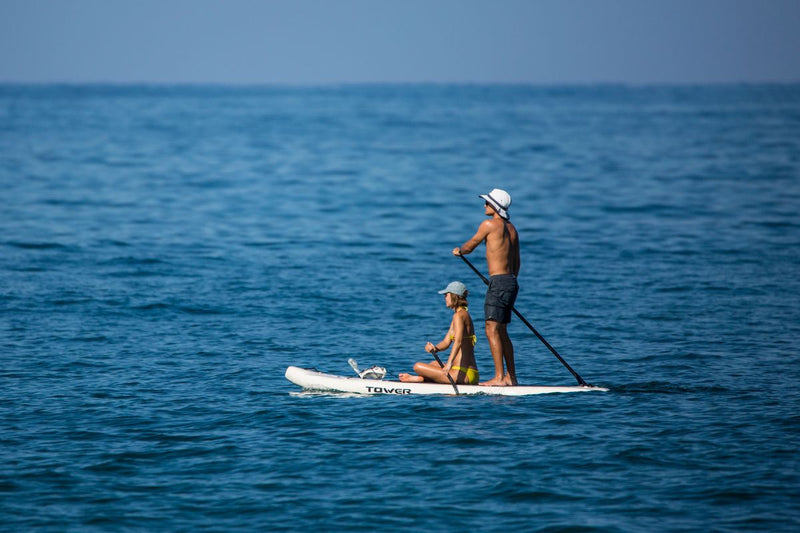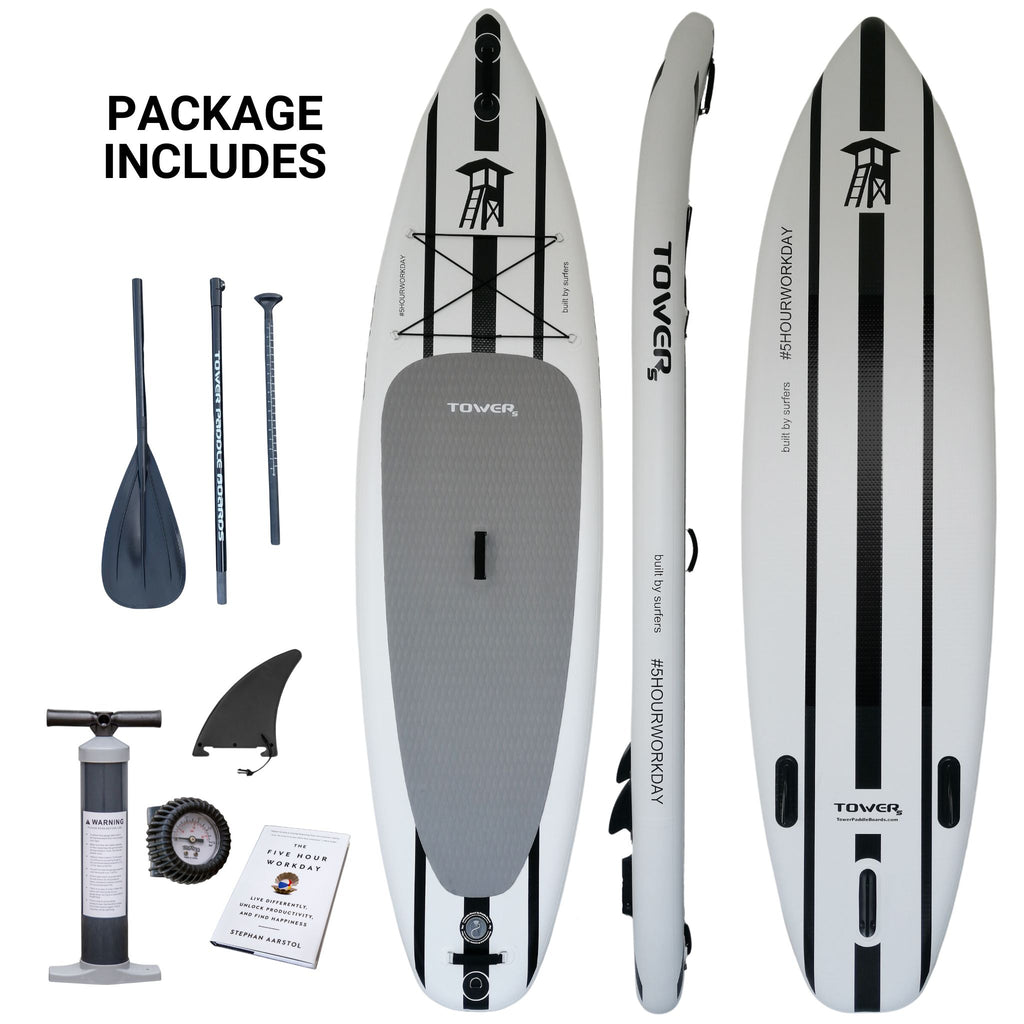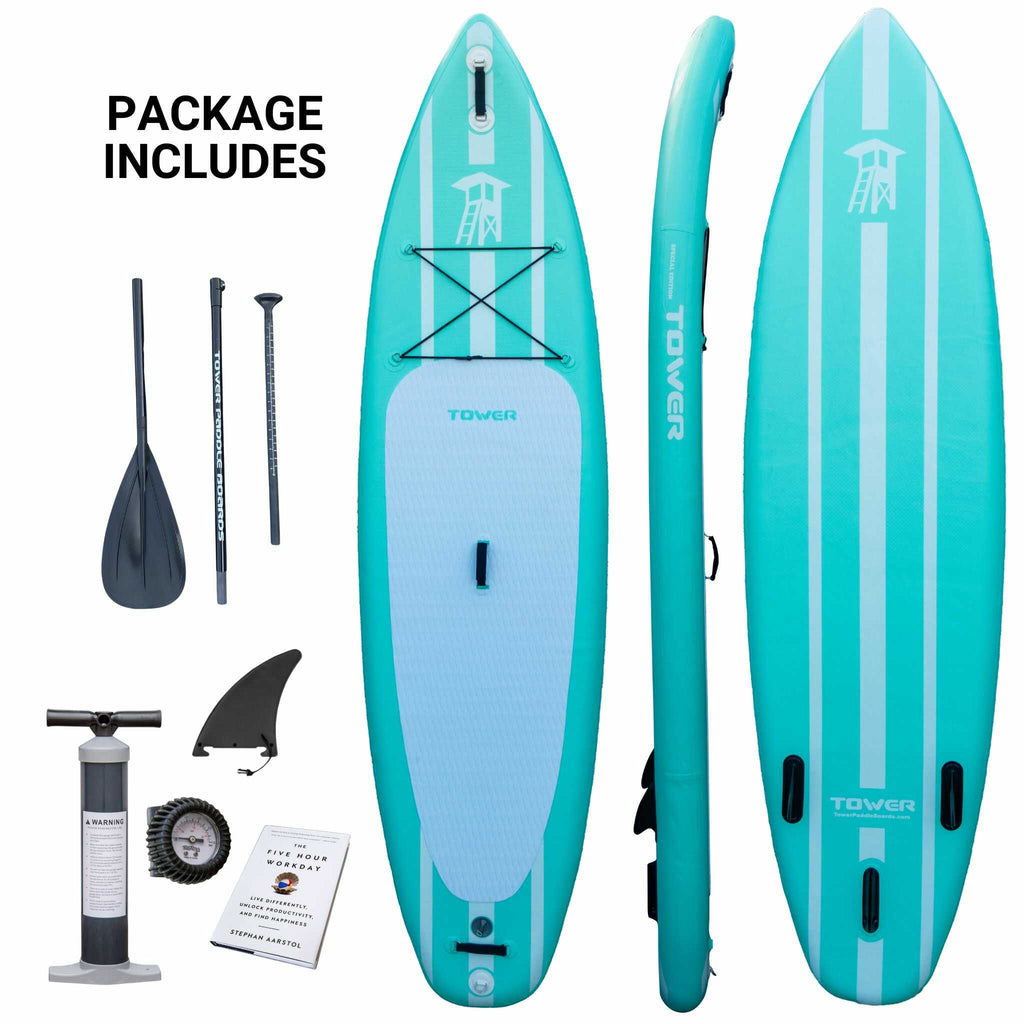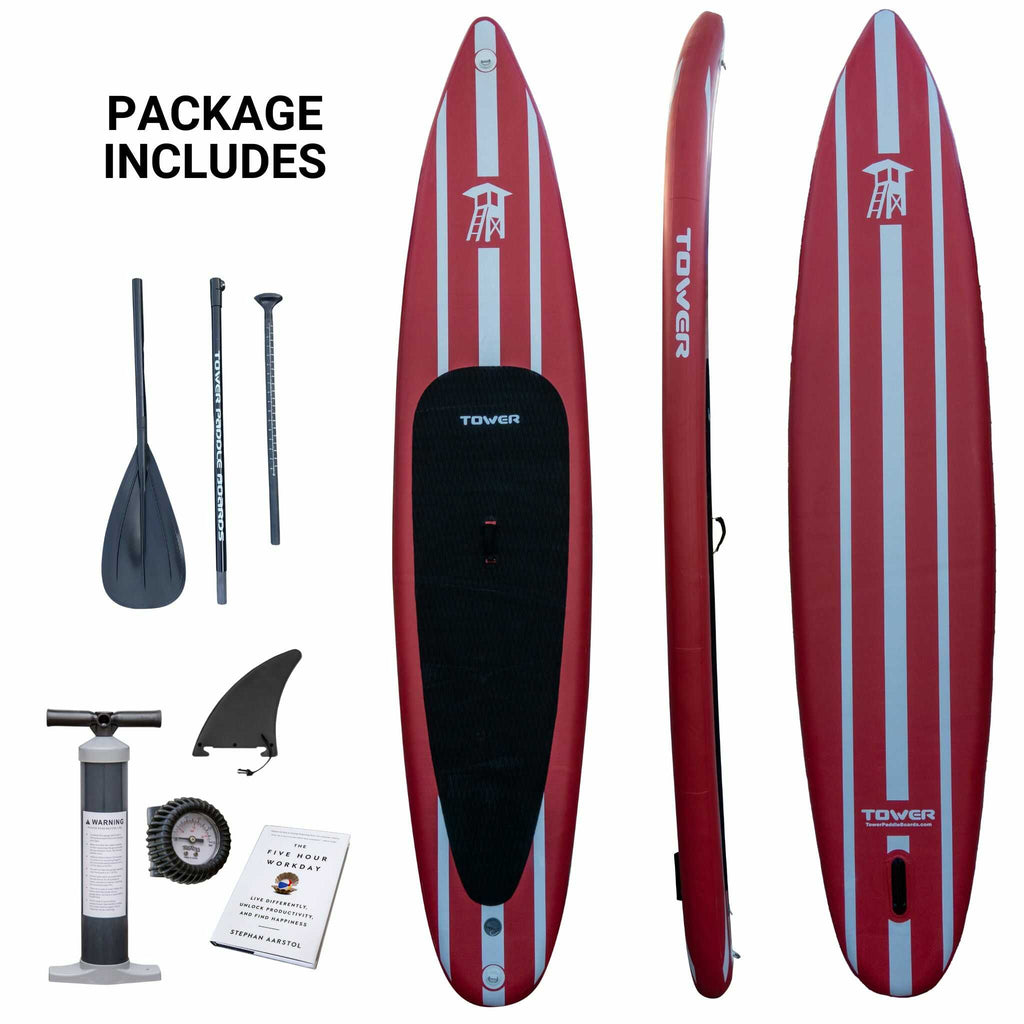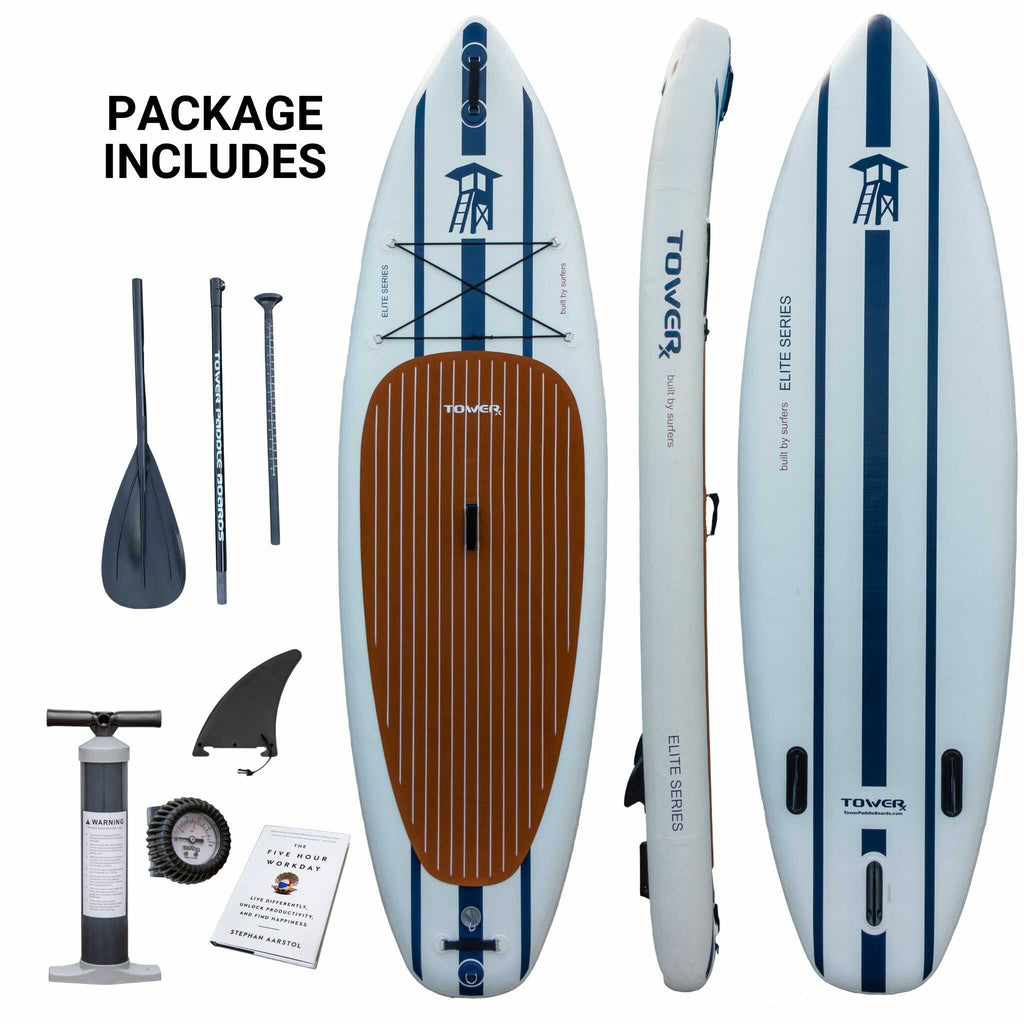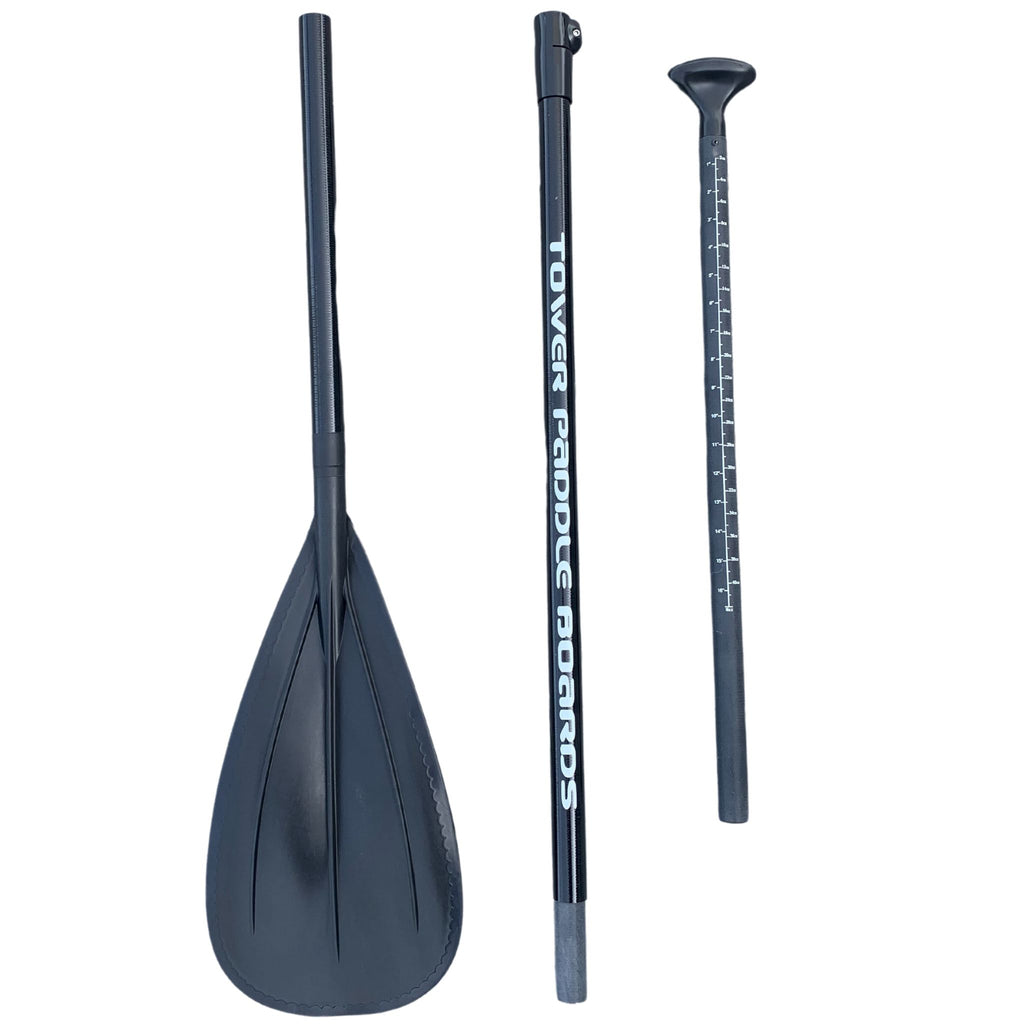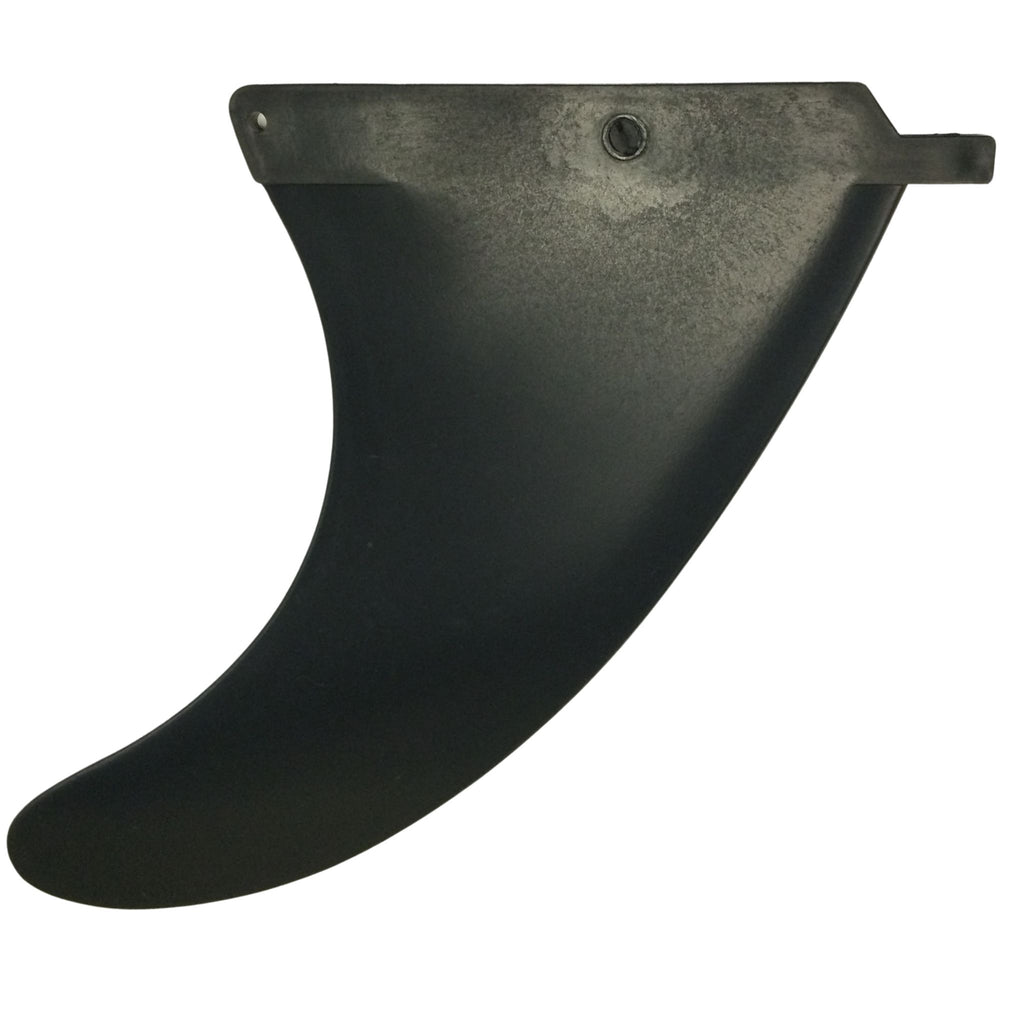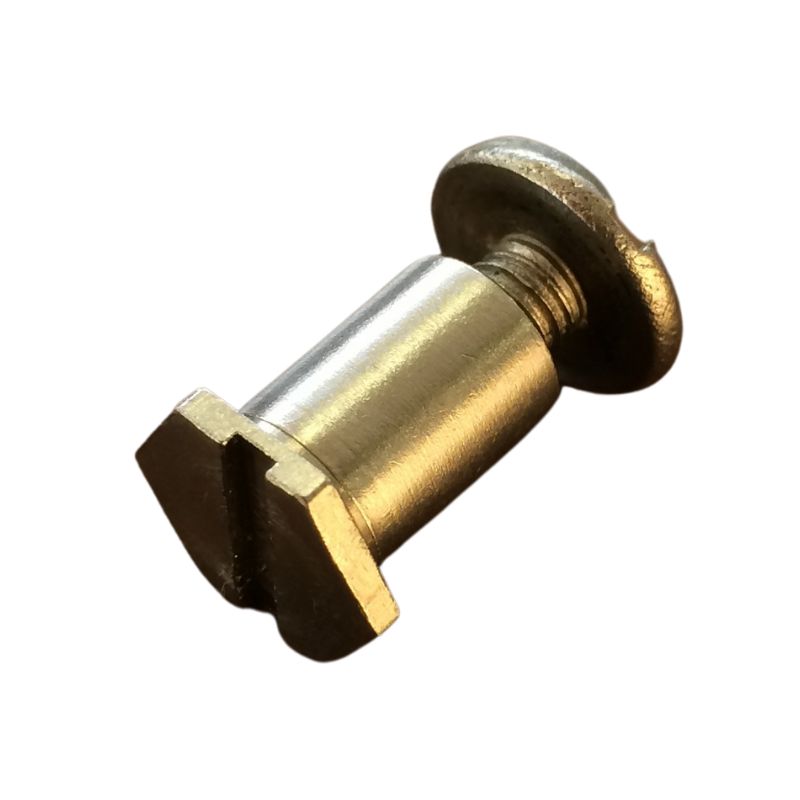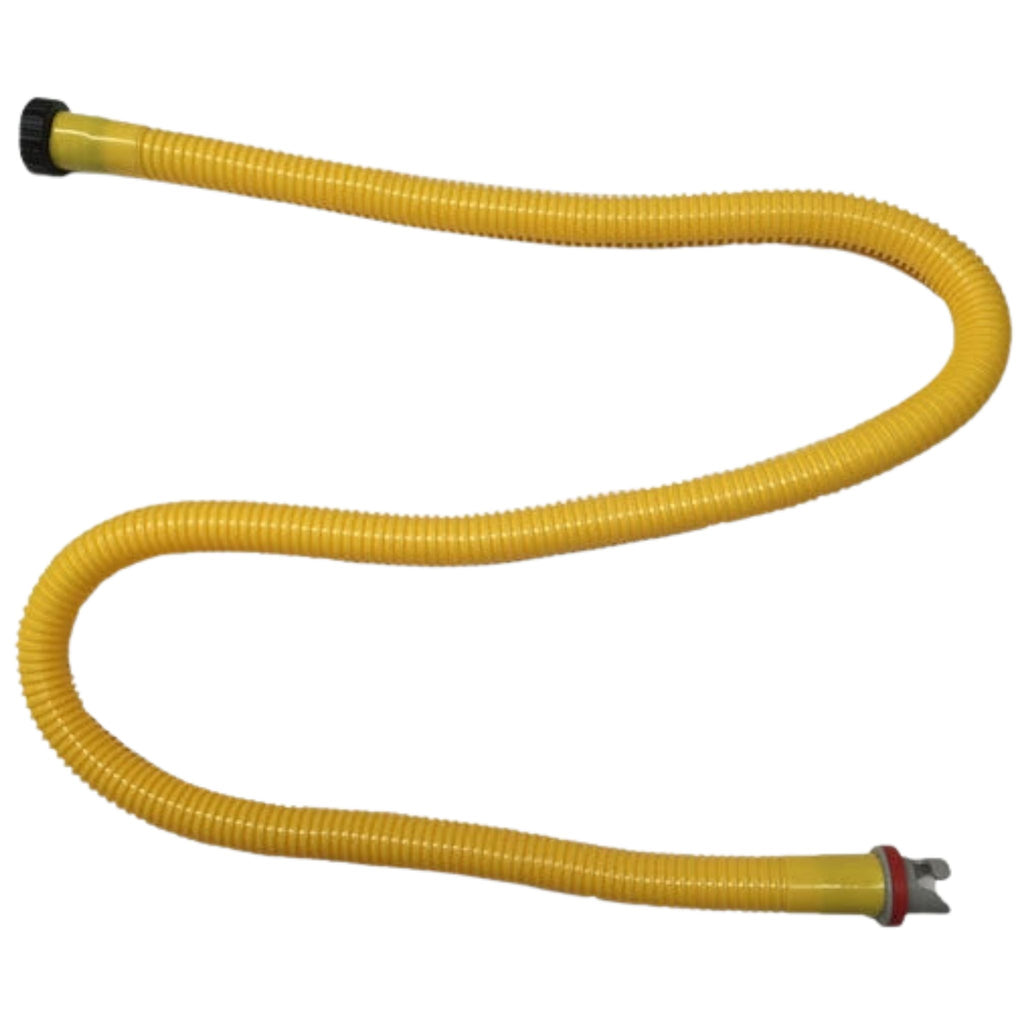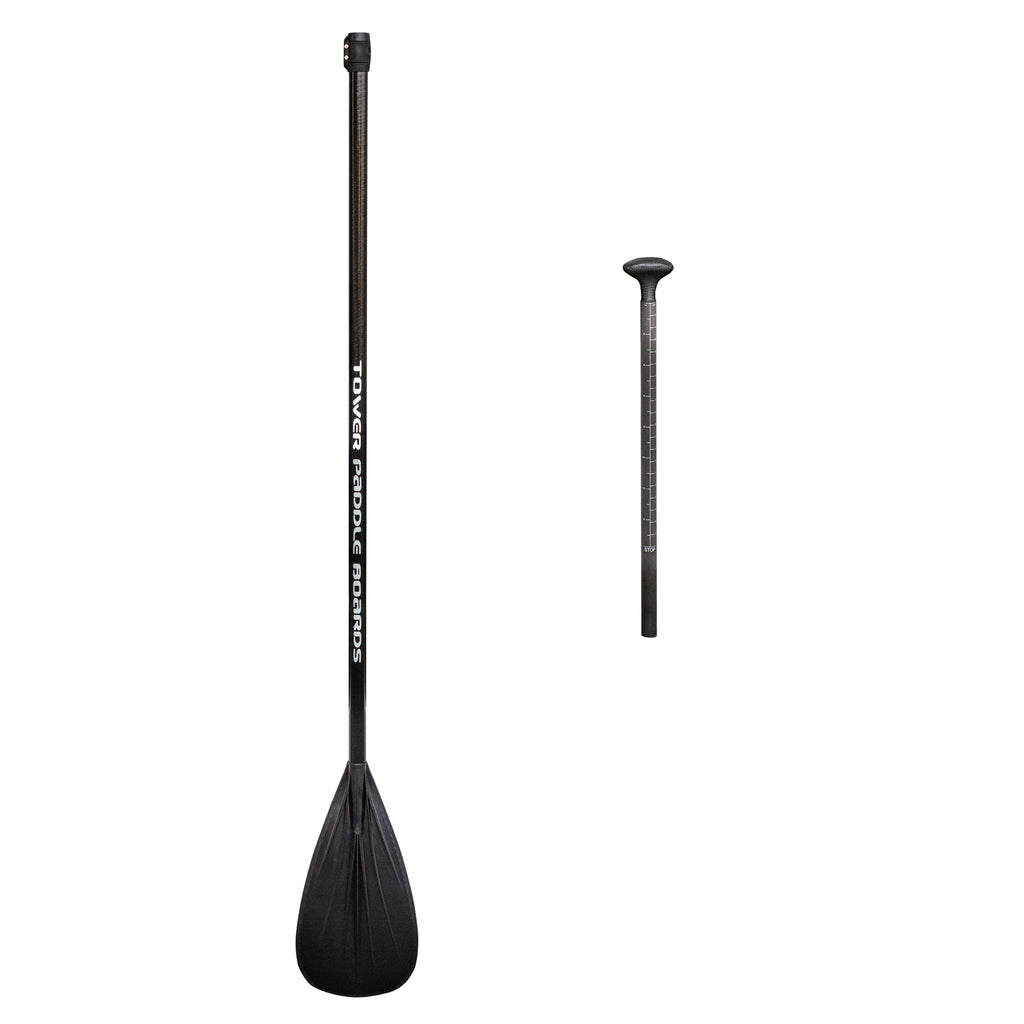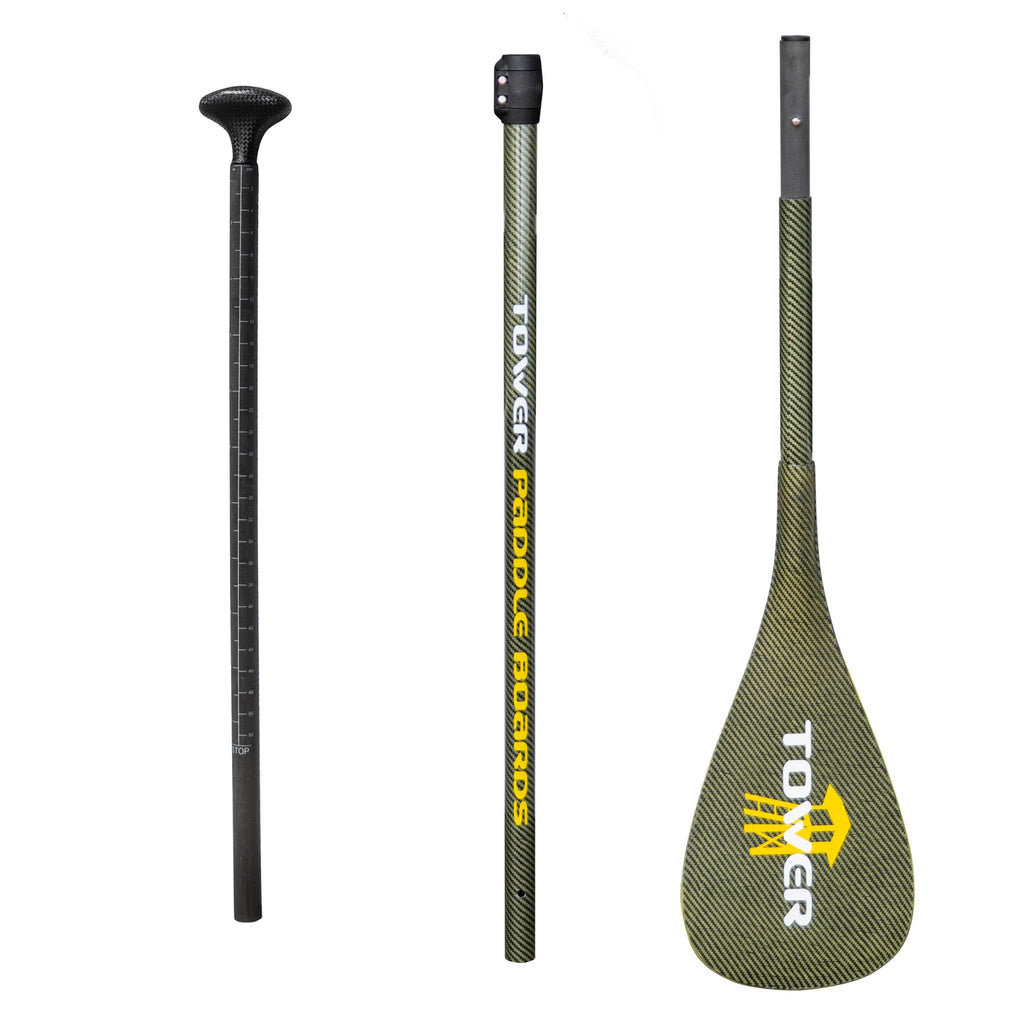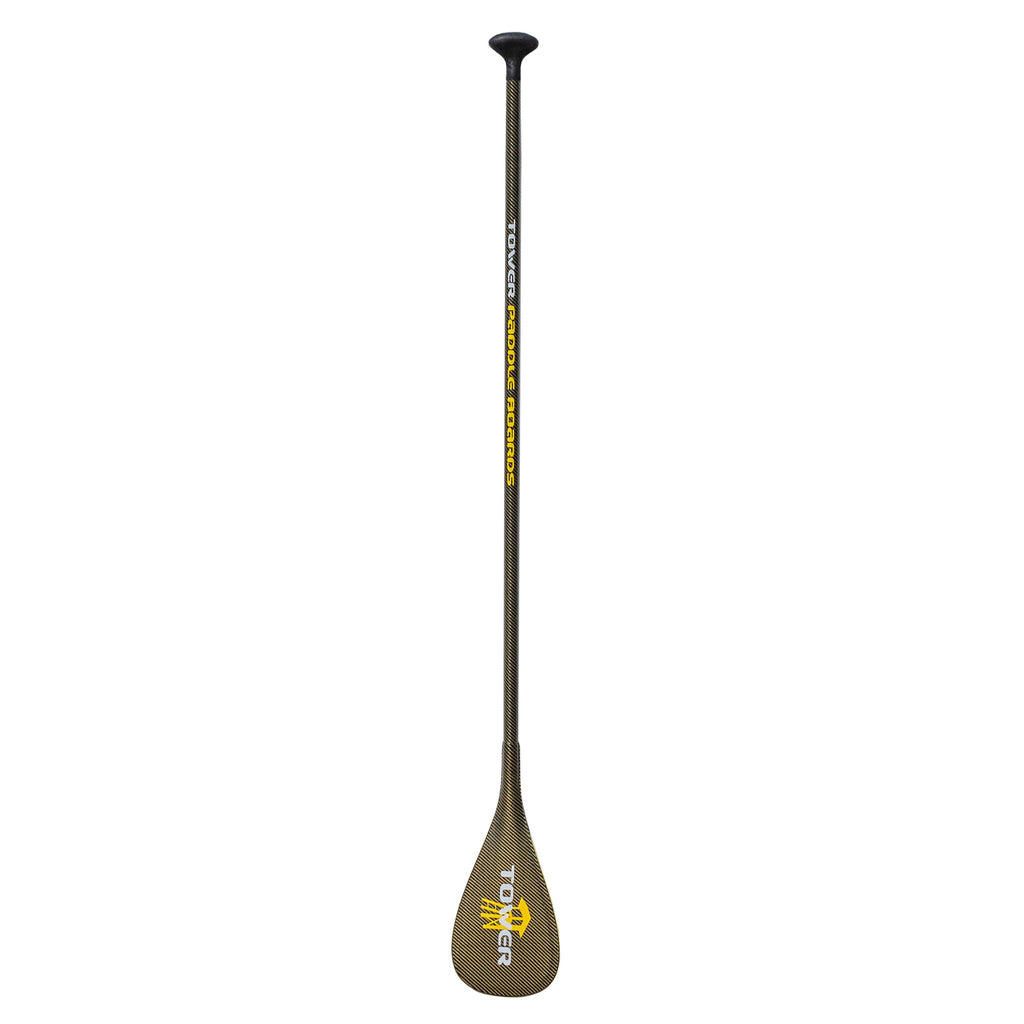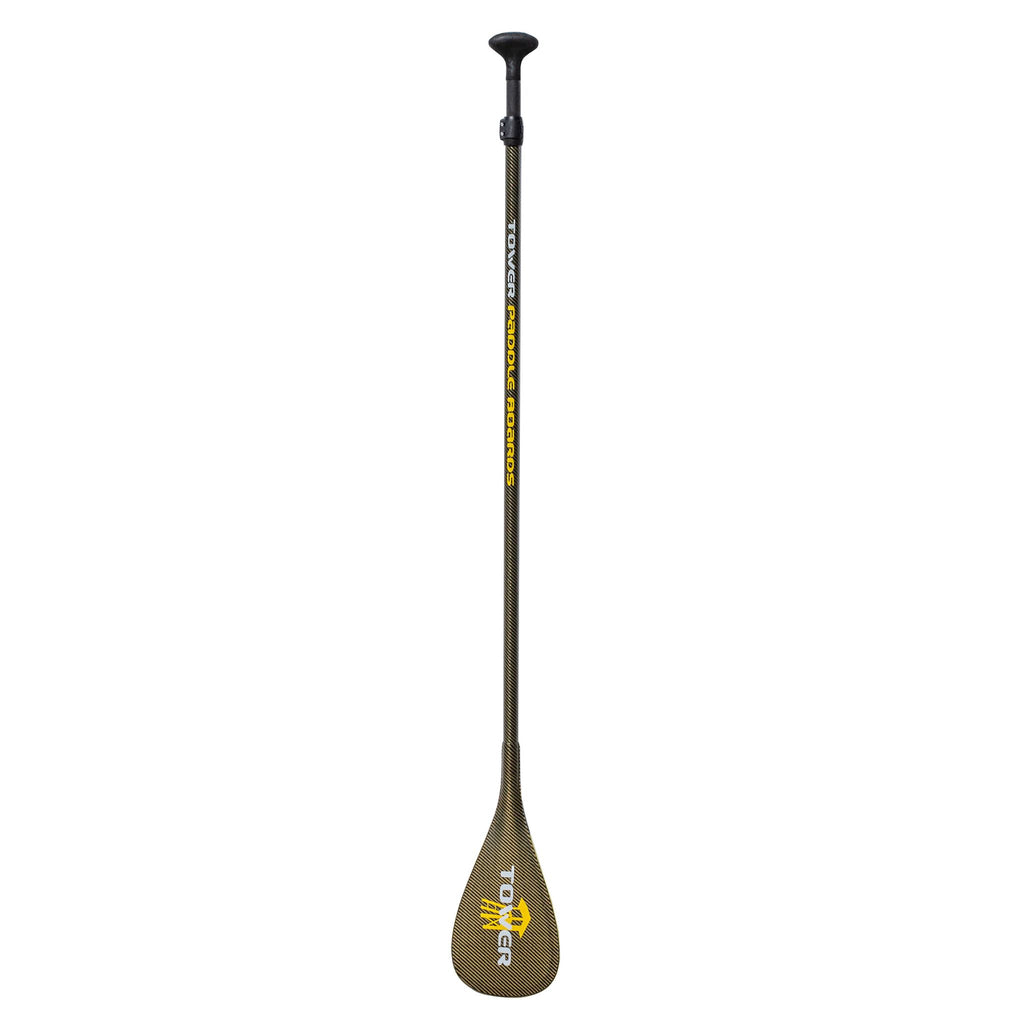If you are wondering, “What is paddle boarding?” or “Is paddle boarding hard?” you’re in luck! Tower Paddle Boards has created a guide to all of the information you need to learn how to paddle board, select the right SUP equipment, and expand your mind to all that the paddle boarding lifestyle can offer you.

- How to SUP: Body Positioning
- SUP Paddling Technique
- Alternating Your Paddle Board Stroke
- How to Turn a Paddle Board
- Paddle Surfing Is Difficult but Fun
- Navigating the Paddle Surfing Break
- Paddle Surfing in Closed-Out Areas
- How to Paddle Surf Your First Waves
How to SUP: Basics of SUP Equipment
Stand-Up Paddle Boarding Board Options
Paddle Boarding Accessories: What Do I Need for Paddle Boarding?
Paddle Boarding in Flat Water
How to SUP: Body Positioning
When starting out on the path of learning how and where to stand on a SUP board, you first want to find the center of the board. Then, position your feet in a parallel stance about shoulder-width apart around the center point of the board. You’ll want your knees to be bent slightly. If you’re wondering, “Is paddle boarding easy to learn?” you should know that it can be difficult to learn the muscle memory required for balancing, but it’s helpful to practice rocking the board side to side alternately with your legs. This is the counter-balancing motion that you need to learn to balance. It takes about 30 minutes to find your balance and to get the muscle memory to learn to SUP. It may not feel stable at first, but in no time, you’ll be very comfortable on flat water paddle boarding. If you’re adventurous and want to learn to paddle surf in the waves, see below for more detailed instructions on how to paddle surf.
Stand-Up Paddle Boarding: Paddling Technique
Is paddle boarding hard? We wouldn’t say that, but we would say that it can be intimidating, especially when you’re trying to learn the proper technique. But once you master the basics, you’ll be well on your way.
When you’re gripping the paddle, your opposite hand (your left hand if you’re paddling on the right side of the board) should be on the top paddle handle, and your inside hand should be on the shaft of the paddle with the palm facing in. All of the power in your stand-up paddle boarding stroke comes from paddling in front of your body, so you want to reach the tip of the paddle out as far as you can reach, then pull back with your core only until you cross your body. Then, withdraw the paddle from the water to take the next stroke.
As you pull the paddle back, you want to work it with the core of your body. Your arms should be fairly straight throughout the process. The trick to using your core when learning how to paddle board is to think of your body alignment to the paddle like an A. Your top arm extends over your head to hold the end of the SUP paddle, forming one side of the A. The SUP paddle itself is the other side of the A, and your outer arm is the crossbar of the A. Keep that A formed throughout your stroke.
When you pull the paddle out of the water at the end of your stroke, you sort of drop your top hand toward the opposite side of the board and bring the paddle through the air flatly to minimize wind resistance. The paddle should cut through the air like a knife. You’ll see beginners doing this incorrectly and fighting against the wind with their paddle. The windier it is, the more you can feel the difference here. The paddle will be a straight shaft with a paddle that angles forward. You want the angle going forward, so the paddle has the ability to bend and recoil as you paddle it from front to back. Very frequently, beginners mistakenly paddle with the paddle angling backward.
When you’re still learning, “What is paddle boarding?” and figuring out how to get started, you can use short or long strokes, but you’ll want to experiment with the power of your stroke. If you just sort of casually stab the paddle into the water and move it backward without a good deal of effort, you will not go very fast, and if you have to go upwind, you may stall in the water. Experiment with aggressively pulling the paddle back with your core for a dozen stokes or so in order to understand the different effort that’s involved in really pressing it. While you don’t have to paddle aggressively all of the time, you should know how to in case you get into a bind. There’s a big difference between renting a paddle board and tooling around and really knowing how to paddle board. You have to really push it if you want to enjoy the core workout element of paddle boarding.
Alternating Your Paddle Board Stroke
Unless you’ve got a dedicated racing board (these typically have very pronounced V hulls), you’ll notice that the direction of your paddle board changes slightly with every stroke. It’s largely dependent on your fin size and configuration as well as your paddle stroke, but by the time you’ve done a few strokes on the right side of the board, you’ll notice that the direction you’re now heading may be 15 to 30 degrees to the left. Now, you’ll want to switch to the other side and do five strokes there. You alternate back and forth, and your top hand switches each time you alternate sides. Grab the mid-paddle with your top paddle hand as you cross the board, and move your mid-paddle hand to the top. Lean out toward the side you are paddling on to use the edge of your board as a rail of sorts. Different SUP boards track differently based on the different shapes of their bottoms. A big part of learning how to stand-up paddle board is learning what SUP boards work best for the type of SUP adventure you are looking to enjoy. See our stand-up paddle boarding board type discussion below.

How to Turn a Stand-Up Paddle Board
There is a stand-up paddle board turning technique you can learn as a beginner that is incredibly simple. If you just keep paddling on one side of your SUP board, you will follow a slow, rounded turning radius on most stand-up paddle boards. Dedicated racing SUP boards and touring paddle boards tend to turn much less, but they still turn a bit. This is how most beginners learn to turn a SUP. It’s a slow and inefficient way to turn. Once you feel comfortable with balancing on your paddle board, you can make much quicker SUP turns by just walking back one foot on your board. Position your outside foot (outside to the turn, closest to the SUP paddling side) back as far as you can in a sort of open parallel stance. You want to dig in the tail of the board and lift the front of the board while you are paddling: This allows you to easily swing the board around as you take short paddle strokes. Once you’re around the turn, just walk back forward to the standard parallel stance in the middle of the board. Once you can do this without falling, you’ve mastered learning how to SUP turn. In a pinch, you can also turn quickly with a backward stoke on the side you want to turn toward. Just do a few aggressive SUP paddles on one side, then a couple in reverse on the other side, and your board will swing around.
How to Paddle Surf
Paddle Surfing Is Difficult but Fun
When it comes to using a paddle board vs. a surf board, it all depends on personal preference. There is a lot more going on in stand-up paddle surfing than in flat-water paddling. Even once you negotiate through the whitewater and crashing waves to a safer area outside of the breaking waves, there is still a constant swell you’re trying to balance against. This makes it all the more difficult, especially if you’ve never even done flat-water stand-up paddle boarding before. The balance issue is compounded by the fact that you never really know what level is, as everything is moving. A good trick is to fight the urge to look down at your feet while you’re trying to balance on a paddle board and instead focus on the horizon or the beach. That’s your level. Forget your feet. The paddle board and your feet will take care of themselves if you concentrate on the true level, the horizon. As a side note, this is also how you keep from getting seasick on a boat.
Paddle Surfing Strategy: Navigating the Break
One of the most challenging elements of stand-up paddle surfing is just getting through the whitewater and crashing waves. Before you can even think about how you’re going to catch a wave, you actually have to get out into position beyond the breaking waves. Having a huge SUP board makes this all the more difficult. It’s best to just watch the waves for a bit before you venture out on your first paddle surfing adventure. Look to see if there is an area where the waves are consistently peaking (the farthest out and most central place it breaks). Typically, the wave peaks in one spot and then breaks out toward the “shoulder” and sort of dwindles out. You definitely want to head out in the shoulder area, not right in the heart of the wave break. You do this both because it makes getting out easier and because you’ll get in the way of other surfers and paddle surfers if you try to go out on the inside of a wave.

Paddle Surfing in Closed-Out Areas
In many areas, the waves kind of all break or close out at once. On a stand-up paddle board as a beginner, this will probably be your proving ground, as the “good surf spots” will be crowded and no place for a paddle surfing beginner. You pose a danger to others there: You don’t know what you’re doing yet, and you’ve got a massive stand-up paddle board in tow that can wipe out other people if you lose control.
In these types of close-out paddle surf areas, just pick the least bad spot to go out. Inevitably, you’ll get caught on the inside at times in the whitewater and crashing waves. As waves typically come in sets, it’s best to just wait out the set in the whitewater and then head for the shoulder to go out. In a crowded spot, it’s bad surfing etiquette to cut across the whitewater during a set, as you tend to get in the way of incoming surfers. In the waves and whitewater, it’s perfectly OK (and recommended) to paddle on your knees and choke up on the paddle and make quick, short strokes when you have a chance to get out. Learning how to stand-up paddle surf is very challenging, so there’s no shame in dropping to your knees to get through a tough patch at times and then hopping back into your upright paddle surfing stance when the situation improves. This is not the time to lollygag around when you are heading through the waves on a paddle board. The point is to get out as quickly as you can, while you can, so paddle aggressively. You can rest once you’re outside the breaking waves. Fortunately, a stand-up paddle boarder can paddle at three times the speed of a prone surfer, so you can cover ground quicker. It’s slower when you’re on your knees, but it’s still very nice to have a paddle. On the flip side, surfers can duck-dive waves or do turtle rolls, while paddle boarding means you’ve got to go right over the top of the wave. You’re faster when paddle surfing, so take advantage of your SUP paddling speed and try not to get caught in the wrong place at the wrong time.
How to Paddle Surf Your First Waves
Catching waves is all about positioning. As a stand-up paddle surfer with a huge board, you’ve got a natural wave-catching advantage over surfers, both short-boarders and long-boarders. Note that surfing etiquette dictates that you shouldn’t use this advantage to abuse other surfers and hog waves. These massive SUPs can catch pretty much any wave, and they can catch them early. Thus, you’ll want to be positioned farther out than surfers. Ideally, you want to catch the wave as close to the peak as possible, then ride the wave out the shoulder. When learning how to paddle surf, just catch whatever you can and get the feel of things. Once you’re on the wave, turn so you’re cutting across the wave face as opposed to heading straight into the beach. The same goes when you are dropping into a larger wave, so you don’t nosedive your paddle board. When you get off of the wave, if you’ve paddled across the wave, you have the added benefit of being able to simply paddle straight out (in the outer shoulder area) past the breaking waves and then paddle back over toward the peak. Under good paddle surfing conditions, it’s kind of a circular rotation.
As you’re scouting for waves, it’s best to be sort of perpendicular to the incoming wave direction and also well outside of where they will likely break. Once you spot a good wave, start turning toward shore and paddling to get momentum toward the beach (which helps the wave catch your paddle board). Paddle pretty ferociously right as the wave meets you, and then, as the wave starts to take you on its own, you want to jump from your parallel stance to a wide surfing stance (so you’re doing a 90-degree jump-turn of your body on the board). And just like that, you’re paddle surfing. Depending on the size of the waves and the drop-in, you want to adjust your angle so you don’t go straight in (and down the wave). The idea is to turn out toward the shoulder and ride alongside the break, not straight at the beach, which will result in a dangerous nose dive in larger waves that have a drop-in. On small waves or when you are just catching whitewater later, your angle doesn’t really matter so much.
Once you’ve practiced the basics and learned how to paddle surf, you can get more and more aggressive about the types of surfing spots you go out in.
How to SUP: Basics of SUP Equipment

Paddle Board Carriers
Stand-up paddle boards are larger than people realize at first. Most SUP boards are 10 feet long or longer and almost 3 feet wide. They aren’t heavy, at only 25 to 30 pounds, but it’s awkward dealing with something of that size regardless of the weight. Hard SUP boards are made out of fiberglass and epoxy resin (like a surfboard), so they are fairly easy to damage by whacking a corner.
Here are a few tips that can help make transportation easier:
- Consider ISUPs: Seriously consider going the inflatable paddle board route instead of a hard paddle board. Inflatable SUPs are almost indestructible and can be deflated to save space and hassle. Unless you are surfing and you need the edge transition only available on hard SUPs, inflatable paddle boards are a better option. That’s why 90%+ of the market buys iSUPs these days.
- Get a Paddle Board Bag: If you have a hard board, a high-quality paddle board bag is a good idea to protect your investment.
- Learn the SUP Shoulder Carry: Most SUP boards have a handle that’s designed so you can carry the board under your arm, but you can also flip these up over your shoulder to carry it. Alternate between the two for comfort.
- SUP Racks Are a Must: Paddle board car racks are absolutely necessary. Get some nice paddle board roof rack pads and some good-quality paddle board car rack tie-down straps.
- Airplanes Are a No-Go for Hard Boards: Surfboards are expensive to take on airplanes, but most stand-up paddle boards are over the size limit (9 to 10 feet depending on the airline) for planes. If you want to travel with a paddle board, get an ISUP.

Paddle Board Paddle Sizing
Your SUP paddle length is pretty critical. Many paddles come in a fixed length that you choose when you purchase it, but it’s a lot more common in recreational settings to be found using an adjustable SUP paddle. To adjust it to your height, there are two primary calculations you want to look at. If you are flat-water paddling, you want the SUP paddle distance between the tip of the blade and the top handle to be about 8 to 10 inches over your head. If you are going paddle surfing, you’ll want it about 6 to 8 inches over your head. Extend your thumb and pinky finger on your hand and place that on top of your head and you’ve estimated about 6 to 7 inches over your head. Use that as the base for setting the length of your SUP paddle.
SUP Fins
If you have a hard stand-up paddle board, you will need to ensure that the fins are installed securely: They’re crucial parts of a paddle board for steering. There’s nothing worse than being on a paddle board with no fins. You’ll just go around in circles and be at the mercy of the wind. If your paddle board has a center fin box, this works just like the center box on a regular surfboard. Center fins for a SUP will come with a paddle board fin screw and plate that slides along a channel in the SUP fin box. Disassemble the fin screw and plate from the SUP fin. Lace the screw through the front of the fin (you’ll see a screw-sized hole) while dropping the rear fin peg (attached to the base of the fin) into the fin box channel, and slide it back. Then, position the separate plate in the fin box channel and slide it either back or forward a bit to orient it directly under where the screw pierces the fin base. Press down and screw it into the SUP fin box plate. By applying pressure with the screw, the fin gets secured within the SUP fin box.
If you have an inflatable SUP, there are a couple of different options for fin mounting. On Tower ISUPs, we have a hook and pin paddle board fin configuration. You hook the front of the fin base over the fin box and then pull back and set the pin.
Stand-Up Paddle Boarding Board Options

Inflatable Paddle Boards Versus Hard SUP Boards
If you’re wondering, “What is a SUP board?” you might be surprised to learn that there are a few different answers. There are hardtop paddle boards, touring paddle boards, racing boards, surfing SUPs, and, of course, inflatable paddle boards. To help decide which paddle board is best for you, we have a convenient paddle board finder quiz.
Back in 2010, less than 1% of all paddle boards sold were inflatable, even though that product had been on the market for five years or more at that time. The problem was that they were 4-inch-thick inflatable paddle boards, which rode like a banana through the water and were pretty useless. We were one of the pioneers in prototyping 6-inch-thick and 8-inch-thick inflatable paddle boards in 2011, and we introduced Tower inflatable paddle boards into the market the following year at direct-to-consumer pricing (so half-price of retail). Today, well more than 70% of stand-up paddle boards sold worldwide are inflatable SUPs. They’ve taken over because aside from surfing and racing, ISUPs are pretty much superior all around. Inflatable paddle boards are easier to transport, easier to store, largely indestructible (while hard SUPs are very easy to damage), and safer, as they’re softer to the touch. Their rigidity surprises many people, too.
If you want to paddle surf, then you should only be considering a hard paddle board, as you need the edge transition to carve it up on the waves. And while you can race with ISUPs and they’re a magnitude less expensive to transport if you’re flying all over the place, most races are done on specialty racing paddle boards.

All-Around Paddle Boards
When we entered the paddle board market a decade ago, most of the industry focus was on developing expensive paddle surfing boards and racing paddle boards, as those were the best niches to hang a brand on and make magazine print ads for. But at Tower, we just decided to focus on all-around paddle boards. This simplifies things, too, as paddle surfing boards and racing paddle boards come in all kinds of specialty shapes, sizes, and materials, while you can make just a couple of board sizes that can accommodate pretty much 99% of all-around paddle boarders.
There’s a lot of talk about different size paddle boards out there, but most of people will be well-suited with a 10-to-12-foot all-around paddle board if they are shopping for hard boards. If you’re a little heavier, go closer to 12 feet. If you are not as big, go closer to 10 feet. A little extra length on hard boards helps create enough volume to support bigger riders. We keep things simple and only carry two models of hard boards at Tower, a 9-foot-10 wood paddle board and an 11-foot-5 wood paddle board, both of which are all-around paddle boards with sufficient volume and rocker so that they are decent for small wave paddle surfing as well. These Tower stand-up paddle boards are molded, sandwich-construction boards with the high quality and durability you need. The design is a beautiful wood laminate, which adds extra shell strength in addition to beauty.
- Great for 99% of riders
- Perfect for what most people do, which is paddle around on flat lakes or bays
- OK to take out to surf (if they’re designed correctly), so you only need one board
- Widely available to demo at paddle board rental places
Inflatable SUPs
Inflatable paddle boards have taken over the SUP industry over the past decade, and for good reason. Tower invented 6-inch-thick inflatable paddle boards in 2011 and introduced them to the market in early 2012, and once we did, the world discovered that ISUPs could be nearly as rigid as hard boards (fiberglass SUPs) and had the added benefit of being easier to store and transport, safer for kids and anybody falling and hitting their head, and virtually indestructible (as opposed to somewhat brittle hard boards).
In the past, those who referred to all-around paddle boards meant hard SUPs, as those were the original all-around paddle boards. Today, however, most people looking for an all-around SUP should really be looking for an inflatable stand-up paddle board. They’re perfectly suited for the all-around paddler who will use their SUP on lakes, rivers, bays, and even playing around in small surf. A 10-foot inflatable paddle board can support a 350-pound person easily, but a 10-foot hard board of normal construction and thickness would support about a 200-pound person; another added benefit of inflatable paddle boards is that a shorter board works for pretty much anyone. You don’t have to get a 12-foot behemoth hard SUP if you are a bigger SUP rider.
While there are all different sizes of ISUPs, 99% of the population can get away with an all-around ISUP that’s around 10 feet long. Our 10-foot-4 Adventurer ISUP works for pretty much everyone. There are racing ISUP shapes that are longer and narrower, and we make a tandem touring board that’s 14 feet long and 8 inches thick. That SUP board, called the Xplorer, can support up to 800 pounds.
- Unbelievably rigid
- Nearly indestructible
- Easy to store
- Easy to transport
- Forgiving when you fall or hit the board

Touring Paddle Boards
If you plan to traverse long distances on your stand-up paddle board or carry some gear with you on your SUP, it’s a good idea to get what’s called a touring paddle board. These SUPs are longer and typically have a pointier nose. Hard SUPs that are touring boards also have a displacement hull where the front of the board cuts through the water, as opposed to having a front rocker that goes over the top of the water. Touring SUPs also frequently have cargo nets.
The benefit of having a longer touring paddle board is that the extra length helps you both glide and maintain a straight course. Like a big ship, it’s just harder to turn. This extra glide lets you paddle board at a faster clip to get where you are going faster and with less paddling effort. Touring stand-up paddle boards come in both inflatable paddle board form and in hard board form.
- Designed to go fast and glide
- Great for hauling gear
- Excellent tracking

SUP Surfing
Paddle surfing was really where the sport of stand-up paddle boarding originated. The early entrants envisioned paddle boards as just long surfboards with a ton of volume that you could stand up on and use the assistance of a paddle to catch waves. When the surf was small, this was a great way to still enjoy the waves. Early brands in the paddle board industry only made SUP surfing boards. Once people started to use their boards for SUP flat-water recreational paddling, exploration, and exercise as well, it took a while for the brands to understand that the sport was evolving and 90% of the market wasn’t ever going to go in the waves and try paddle surfing. That’s really when the SUP market took off, but because its roots are in SUP surfing, there is a tremendous range of SUP surfing boards to choose from. There are paddle surfing boards under 8 feet long and ones more than 12 feet long, and the shapes are all over the map. Some of the shorter boards are sinkers and can barely support the weight of a small rider, so they can be very difficult to balance for most people.
When you first start to paddle surf, you want to use a big board that you can balance on. A 10-foot-to-12-foot board is ideal. The bigger you are, the more length and volume you tend to require. We make two models of hard paddle boards, both of which are all-around paddle boards, but they also work pretty well for SUP surfing. Our 11-foot-5 wood paddle board works for riders up to 270 pounds, and our 9-foot-10 wood paddle board works well for anyone under 220 pounds. Both are unusually thick boards, so they have extra volume in a shorter package, and this makes them perfect as cross-over paddle boards that can be used for paddle surfing as well as flat-water paddling.
Once you get really good at paddle surfing, you will likely want to gravitate toward a shorter, more aggressive surfing shape so you can really carve up the face of the waves during your SUP surfing sessions. An 8-foot or 9-foot board will also be a lot easier to transport back and forth to the beach, as you tend to have to hike more when you paddle surf. SUP surfing is like a whole different sport from paddle boarding, but it’s not difficult in small waves, and it is incredibly fun.
- Ample rocker so you don’t nose-dive
- Shorter boards can be difficult to balance
- Great turning performance on the wave
- Need the edge transition only available on hard SUP boards

Racing Paddle Boards
Racing SUPs are another niche segment of the larger stand-up paddle boarding market. In the early days, paddle boarding enthusiasts were either SUP surfers or SUP racers. There weren’t a lot of recreational all-around paddle boarders out there. There was a lot of focus on racing paddle boards by early brands, and the biggest events were paddle board racing events. One of the biggest was called the Battle of the Paddle. Racing events included long marathon-like paddle board races in the open ocean as well as relay races from the beach out through the surf around a buoy and back several laps. Racing paddle board design was optimized to compete in this race and ones like it, and there was a lot of experimentation with hull design.
In general, racing paddle boards tend to be longer SUP boards with pointy noses that are frequently displacement hulls, though some have bulbous noses. SUP racing boards are also very narrow. The narrower they are, the more they cut through water like a knife and the faster they are. The problem is that they become less stable the narrower they get. Most beginner stand-up paddle boarders and many regular SUP enthusiasts can’t even stand up on a true racing paddle board. Racing paddle boards have a very sleek and sexy look to them, so many beginners buy one as their first board and end up regretting it. It’s no fun if you can barely stand up, so be warned that you only want to go with a racing paddle board if you are confident in your skills and really need the speed benefit.
Most racing paddle boards are 12 feet 6 inches in length, which is the standard size for racing-class boards. There also tends to be a 14-foot-max class, so you will see a lot of 14-foot SUP racing boards. Then, there are unlimited SUP racing classes where the boards can be any length. SUP racing events started popping up all over the world and the same top racers were competing in all of them, and thus, it became quite an expense and hassle to transport these 12-foot-plus boards to every race around the world. It’s not like you can just take them on the plane with you. As a reaction to that, the inflatable SUP racing class has popped up. It’s much easier to transport these, as you can roll them up like a sleeping bag and take them with you anywhere very inexpensively. Our 12-foot-6 iRace is a very economical option if you are looking to dip your toe into racing paddle boards. Our 14-foot Xplorer is also an extremely fast paddle board because of the rigidity provided by its 8-inch thickness, but note that some ISUP racing classes may limit the length of SUP racing boards allowed to compete.
- Built for speed
- Narrow and easy to tip, so challenging for beginners
- Pay attention to SUP racing class length specifications
- Lightweight, expensive construction materials

Paddle Board Yoga
Paddle boarding attracts a lot of fitness-oriented people. That’s the great thing about paddle boarding: It’s got the cool, soulful appeal of surfing, plus the adventurous appeal of kayaking, plus some amazing fitness benefits, as it’s kind of the perfect full-body workout in nature. The people who got into paddle boarding for the workout quickly started experimenting with doing on-the-water yoga workouts. Yoga is a lot about balance, and doing it on a somewhat unstable platform in the water it ramps up the difficulty level. More importantly, doing yoga out in the open air in nature alongside a beautiful beach or lakefront environment is so much nicer than in a yoga studio.
Initially, when virtually all stand-up paddle boards were hard boards, brands started making SUPs with full-length flat traction pads to make it comfortable to do yoga on a SUP. Prior to this, traction pads were only in areas of the paddle board that would need to be stepped on, so they went up just in front of the midline and all the way to the tail (sometimes with a kick tail for surfing). These full-length-traction-pad boards were very comfortable for laying down on, so paddle board yoga really took off. Once people tried yoga on an inflatable paddle board, the game changed. While hard boards could add padding with a quarter-inch foam pad, they were still hard boards underneath. Inflatable paddle boards had rigidity over the length of a 10-foot span, but any single point along that length was actually quite forgiving. For SUP yoga, this was ideal, as you could bury an elbow in the ISUP to support your entire weight and not hurt your elbow.
Today, most paddle board yoga enthusiasts use inflatable paddle boards, and there are even rectangular floating platforms that aren’t ISUPs that are rising in popularity for use for paddle board yoga and other on-the-water workouts.
- Wide, stable paddle boards are best
- Need a flat paddled traction pad
- ISUPs are ideal, as they are soft at points but rigid along the length

Fishing Paddle Boards
Any wide, stable paddle board makes a good platform for fishing. Really, paddle boards are like ultra-portable one-person boats. If you usually bring a kayak out on the water and you’re wondering, “Is paddle boarding harder than kayaking?” then you can rest assured that it’s just as easy to maneuver a SUP into any fishing hole that’s got more than 8 inches of water, just like a kayak. If you roll up an inflatable paddle board, you can throw it on the back of a four-wheeler and take it to remote fishing holes. We even make inflatable backpacks so you can hike an ISUP to a secluded mountain lake that may have never even had a boat on it in the history of humanity.
Fishers are always looking for a spot to fish where others can’t, as that’s how you’ll find places that haven’t been fished out. All of the opportunity presented by SUP boards was just too much for fishing enthusiasts to resist. Pretty quickly after stand-up paddle boarding was invented, fishing paddle boards started popping up everywhere. Any stable hard SUP could be used for fishing by just popping a cooler on it for the seat, a tackle box up front, and maybe a bucket or net to hold your catch. As soon as ISUPs came onto the market in a big way, anglers flocked to them for their extra portability. With inflatable SUPs, fishing paddle boards could go anywhere.
- Wide, stable paddle boards are best
- There are dedicated fishing SUPs, but any SUP board can work
- Unmatched accessibility to fish in hard to reach spots
Paddle Boarding Accessories: What Do I Need for Paddle Boarding?

Paddle Board Paddles
Once you’ve mastered the technique and are ready to buy your own SUP, you may be wondering what to bring stand-up paddle boarding. Your list should start with a SUP board and a SUP paddle. Unlike kayak paddles, which have paddle blades on both ends, a SUP paddle has a T-handle grip on one end and a blade on the other. Unlike canoe paddles, SUP paddles are much longer and typically 6 to 10 inches taller than the rider. You paddle with one hand on the top T-handle grip and the other around the mid-shaft of the board, with your hands a little more than shoulder-width apart. The blade of a SUP paddle angles slightly forward so it can bend and recoil as you apply paddle pressure.
SUP paddles come in fixed-length, two-piece adjustable, and three-piece adjustable versions. The strongest and best SUP paddle to use is always fixed-length, but it can also be a hassle for a couple of reasons. First, they are a hassle to transport because they don’t break down. Second, they are a hassle to build, as you buy them uncut and have to cut them to the rider height recommendation and glue on the T-handle. Lastly, as they don’t adjust, they only work ideally for the intended rider, so your shorter buddy can’t use your paddle. Still, any serious stand-up paddle boarding enthusiast has a fixed-length paddle cut perfectly for them. A two-piece adjustable SUP paddle is the most popular choice for recreational paddlers, as it’s decent performance-wise but also has the on-the-spot flexibility to be used by any of your friends. Rental places love these, of course. The three-piece paddles were really introduced into the market as “travel-friendly paddles” only, and they were typically sold with inflatable paddle board packages. They work just fine for recreational paddling, but with all of the connection points, you have to always worry about water seeping in with continual submersion and putting your paddle at risk of sinking. Is stand-up paddle boarding difficult with a three-piece paddle? Not necessarily, but there’s definitely more opportunity for the paddle to fail you.
Our recommendation is that you get a two-piece paddle as your first paddle, unless you are buying an inflatable paddle board; then, you might want to get a three-piece so it fits and stores nicely with your rolled-up ISUP. As you get more into the sport, grab a second paddle that’s either a fixed-length or a two-piece, depending on how serious you are about the sport.
Paddle board paddles come in several different construction and material types.
- Aluminum SUP Paddles: On the low end, you can get a paddle shaft made out of aluminum, but they are heavy. They’re strong, but their flex characteristics aren’t great, so they can break instead of bending like you really need to them to. The blades are typically plastic. Also, they can sink if you get a low-quality one, which isn’t ideal. We stopped selling aluminum paddles more than five years ago because they just aren’t the quality our customers expect. The three-piece ones also sink a lot, so beware.
- Fiberglass SUP Paddles: Fiberglass is a great option for an economical SUP paddle that also has great weight, strength, and durability. The blades are typically plastic.
- Wooden Paddles: There are full-wood paddles on the market that are absolutely beautiful paddles, but as SUP paddles, they’re so long in length that they can break. A lot of times, you will see wood hybrid paddles with a wood blade and a carbon-fiber or fiberglass reinforced SUP paddle shaft. These are good options, but they tend not to be the lightest.
- Carbon-Fiber SUP Paddles: The lightest stand-up paddles with great strength characteristics are carbon-fiber paddles. Often, the blade is carbon-fiber as well, but sometimes, it’s plastic. As carbon-fiber is strong over its length but brittle at points, there are many hybrid carbon-fiber paddles where certain elements use other, tougher materials, like a carbon-fiber shaft and a carbon-fiber blade lined with rubber around the blade edge. We offer what we consider to be the best of all worlds, a carbon-fiber and Kevlar hybrid paddle shaft and blade with a special edging.
SUP Leashes
Paddle board leashes are highly recommended if you are going out in any water with a current or if you are paddle surfing in the surf zone. One end of the SUP leash attaches around your ankle or calf, and the other end attaches to a standardized surf leash attachment point on the rear of your board. The leash is typically about the length of your board so that if you fall off in the waves, it will allow the board to get a sufficient distance away from you while still being tethered, so you don’t get whacked by the board. The idea is that you use a paddle board leash when you don’t want the SUP to get away from you, as you can get into trouble if you’re suddenly swimming far away from shore or in a current. It’s a good way to drown. A paddle board will float away faster than you in a current, so be careful and always wear a leash if there is any question about whether you might need one.
A leash is not required all the time, and we don’t recommend it for just tooling around a lake that has no current. The SUP leash will frequently drag off the end of a board, creating extra drag in the water and getting tangled up in seaweed, so if you don’t need it, don’t use a SUP leash. You can get a paddle board leash that is all or partially coiled to keep it up on the board, and this is typically used in open-ocean racing SUPs.

Paddle Board Bags
A paddle board bag serves two purposes. First, it protects a paddle board from damage when you are storing or transporting it out of the water. In high-quality paddle board bags, there is a 4-to-10-mm high-density foam padding that will cushion any bumps you encounter. Second, a paddle board bag protects a SUP from exposure to the elements and sun. EPS foam and epoxy SUPs can be damaged by excessive heat, which leads to delaminating of the shell from the foam core. A paddle board can also be discolored by long-term exposure to UV rays. A paddle board bag serves as a barrier and sometimes a reflective surface to ward off these damaging elements.
You only need a paddle board bag for hard boards, which are somewhat brittle and thus can easily be damaged, especially when they are transported, as they are huge and a little ungainly to handle. Inflatable stand-up paddle boards don’t require these protections, as they are pretty much indestructible to begin with. The only thing you have to protect on an ISUP is the traction pad if you plan to leave your board in excessive sunlight for long periods of time. Keep the board with the traction pad down in that environment. But really, it’s not a great idea to store your board in direct sunlight 24/7.
There’s a wide range of quality in paddle board bags, so examine what you are buying. The cheap bags will have very little paddling, the zippers with fail, and the exterior shell will get cut easily. While a cheap bag is better than no bag, it’s not ideal. Tower only sells premium-quality travel bags with 10 mm of foam protection, high-end zippers, and durable materials. Our paddle board bags are among the finest in the industry, yet they come at incredible pricing because of our direct-to-consumer business model.
Shop our selection of stand-up paddle boards and get a great product at a low price today!









